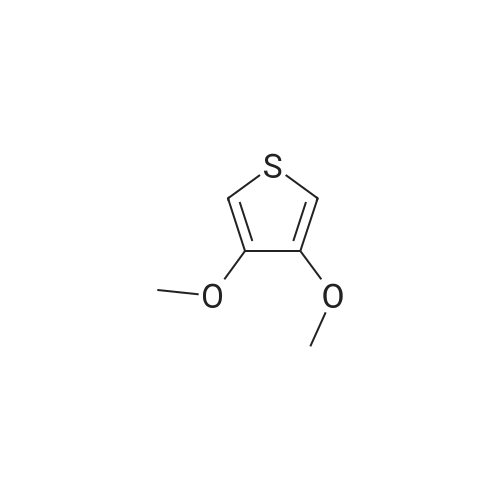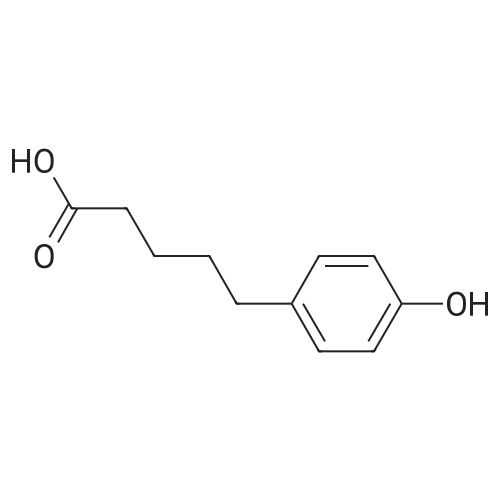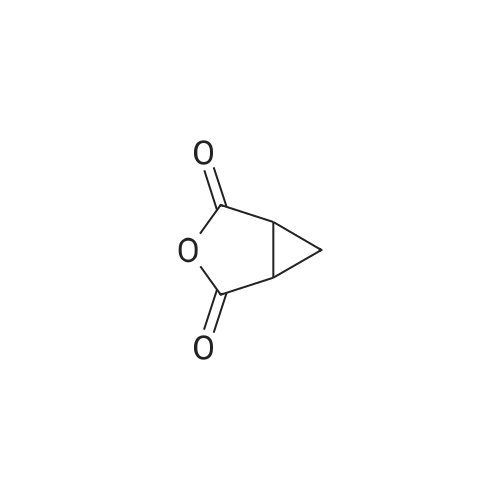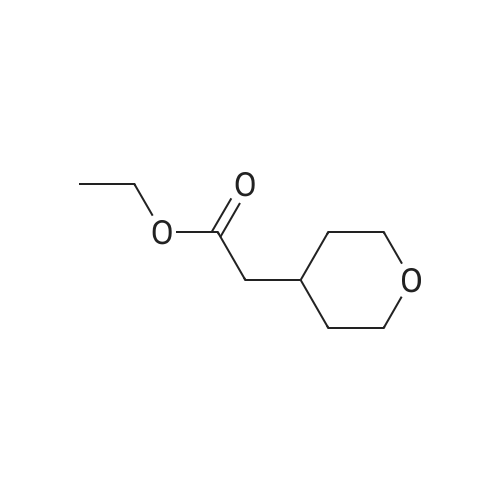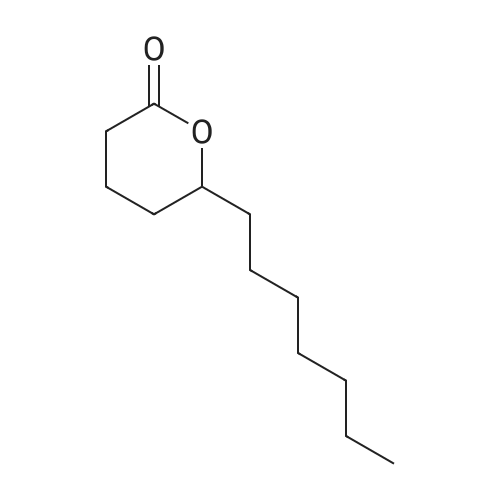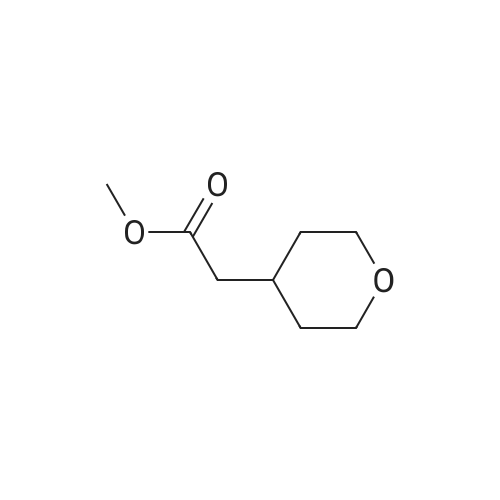| 79.3% |
aluminum (III) chloride; at 5 - 20℃; for 2.25h; |
Charge 250 g of anhydrous AlCl3 (1.87 moles) to a 2 L 3-neck round bottom flask, add 300 mL fluorobenzene (307.5 g; 3.2 moles) and cool the mixture in an ice bath to 5C. Add a hazy suspension of 100 g glutaric anhydride (0.86 mole) in 400 mL fluorobenzene (4.3 moles) through an addition funnel over a period of 45 min., and maintain the temperature below 12C. Warm the reaction mixture to ambient temperature gradually and agitate at r.t. for about 90 min.; check for completion by NMR. Cool the reaction mixture to 0 to 5C, then add a cold aqueous solution (700 mL) of 1 N HCl carefully to the mixture to destroy any unreacted AlCl3, keeping the temperature of the mixture below 20C during the early part of the acid addition, and below 40C for the rest of the time. Pour the entire mixture into a 2 L 1:1 mixture of water and ice (v/w) to precipitate out crude products, filter the white suspension and wash well with water. Add the white residue to 3 L of aqueous saturated solution (~5%) of NaHCO3, heat the basic mixture on a steam bath for one hour and filter the batch while hot through a thin pad of celite. Cool the filtrate to r.t., add about 320 mL of concentrated HCl dropwise into the filtrate to pH 1 to crystallize out products, and agitate the white suspension in an ice bath for 30 min. Filter the batch, wash the wet cake with ice cold water and dry in a vacuum oven at 50C for 16 h to obtain 143.2 g of 4-(4-fluorobenzoyl)-butyric acid; m.p. 141 to 142C, isolated yield: 79.3%. |
| 51% |
|
A flask was charged with AlCl3 (77.17 mmol, 10.29 g, 2.15 equiv) and dry CH2Cl2 (25 ml) under calcium chloride guard tube and the formed suspension was stirred on ice bath. Subsequently, a solution of glutaric anhydride 10 (35.8 mmol, 4.08 g) in dry CH2Cl2 (12 ml) was added dropwise (t < 8 C). The resulting mixture was stirred on ice bath for 30 minutes and fluorobenzene 11c (35.1 mmol, 3.37 g, 1.0 equiv) was carefully added afterwards. The cooling bath was removed and the mixture was stirred at room temperature for 19 hours, then it was carefully quenched with ice water (20 ml), conc. H2SO4 (10 ml) and again with ice water (60 ml), the aqueous layer was extracted with ethyl acetate (1 x 200 ml, 1 x 100 ml, 1 x 70 ml), the combined organics were washed with half-saturated brine (200 ml), dried over Na2SO4, filtered and concentrated. The crude product was crystallized from ethyl acetate to provide 5-(4-fluorophenyl)-5-oxopentanoic acid (3.80 g, 51%) as a yellow-brown powder;3 mp 141-142 C; 1H NMR (300 MHz, CDCl3): delta = 2.08 (m, 2H), 2.51 (t, J = 7.2 Hz, 2H), 3.05 (t, J = 7.2 Hz, 2H), 7.13 (m, 2H), 7.99 (m, 2H). 5-(4-Fluorophenyl)-5-oxopentanoic acid (16.7 mmol, 3.50 g), paraformaldehyde (50.0 mmol, 1.50 g, 3.0 equiv) and piperidine (0.32 ml, 0.2 equiv) were dissolved/suspended in pyridine (15 ml) and stirred at 70 C for 21 hours. Afterwards, the mixture was poured into 1M H2SO4 (340 ml), the aqueous layer was extracted with ethyl acetate (4 x 100 ml), the combined organics were dried over Na2SO4, filtered and concentrated. The residue was purified by flash chromatography on silica gel (EA/hexanes = 1/1 + 0.5% AcOH). The obtained product was repeatedly coevaporated with toluene (4 x 25 ml) under reduced pressure to remove the residual AcOH, yielding 4-(4-fluorobenzoyl)pent-4-enoic acid 9c (3.33 g, 90%) as an orange solid; mp 81-82 C; 1H NMR (300 MHz, CDCl3): delta = 2.62 (t, J = 7.2 Hz, 2H), 2.80 (t, J = 7.2 Hz, 2H), 5.65 (s, 1H), 5.92 (s, 1H), 7.12 (dd, J = 8.7, 8.7 Hz, 2H), 7.78 (dd, J = 5.7, 8.7 Hz, 2H), 10.74 (bs, 1H); 13C NMR (75 MHz, CDCl3): delta = 27.3, 32.5, 115.3 (d, JCF = 21.8 Hz), 126.7, 132.0 (d, JCF = 9.0 Hz), 133.7, 145.9, 165.3 (d, JCF = 252.5 Hz), 178.9, 196.2 |
|
aluminum (III) chloride; In dichloromethane; at 10 - 15℃; for 4h; |
Into a 3L three-necked RB flask were charged [500ML] of methylene chloride, 250gr of aluminum chloride and 45gr of fluorobenzene (benzene content 300ppm) under nitrogen atmosphere. 'The reaction mixture was cooled to [10C] and a solution of [LOOGR] of glutaric anhydride, 45gr of fluorobenzene (benzene content 300ppm) and [500ML] of methylene chloride was added slowly over a period of 3hrs between [10-15C.] The reaction mixture was maintained for another one hour at the same temperature. The reaction mixture was slowly poured onto a mixture of crushed ice (700gr) and conc. HCI [(300ML)] below [10C.] The reaction mass temperature was allowed to reach [25C] and methylene chloride distilled off from the reaction mixture below [50C.] After cooling the reaction mixture to [20C,] solids were filtered off and washed with [500ML] of water. The wet cake thus obtained was suspended in [250-300ML] of methylene chloride and filtered. The solid compound was dissolved in [600ML] of 4% sodium hydroxide, treated with [LOGR] of activated charcoal and filtered. The filtrate was acidified with conc. HCI and the precipitated acid was filtered. After washing the wet cake with [500ML] of water, it was dissolved in [500ML] of acetone. The acetone solution was slowly cooled to [15-20C] and the solid filtered, washed with chilled acetone (50ml) and dried at [50-70C] to get 122gr of white crystalline solid, m. p. [143C.] Purity by [HPLC] is 99.65%. Desfluoro impurity is less than 0.05%. Example 2 Preparation of [4- (4-FLUOROBENZOY) LBUTYRIC ACID] of formula-I using fluorobenzene (benzene content [500PPM)] with methylene chloride as solvent: Into a 3L three-necked RB flask were charged [500MI] of methylene chloride, 250gr of aluminum chloride and 45gr of fluorobenzene (benzene content 500ppm) under nitrogen atmosphere. The reaction mixture was cooled to [10C] and a solution of [LOOGR] of glutaric anhydride, 45gr of fluorobenzene (benzene content [500PPM)] and [500ML] of methylene chloride was added slowly over a period of 3hrs between [10-15C.] The reaction mixture was maintained for another one hour at the same temperature. The reaction mixture was slowly poured onto a mixture of crushed ice (700gr) and conc. [HCL] [(300ML)] below [10C.] The reaction mass temperature was allowed to reach [25C] and methylene chloride distilled off from the reaction mixture below [50C.] After cooling the reaction-mixture to [20OC-1 SOLIDS :] were filtered off and washed with [500ML] of water. The wet cake thus obtained was suspended in [250-300ML OF] methylene chloride and filtered. The solid compound was dissolved in [600ML] of [4%] sodium hydroxide, treated with [10GR] of activated charcoal and filtered. The filtrate pH was adjusted'to 1.0-2. 0 with conc. [HCL] and the precipitated acid of formula-I was filtered. After washing the wet cake with [500ML] of water, it was dissolved in [500ML] of acetone. The acetone solution was slowly cooled to [15-20C,] maintained for 2h, and the solid filtered, washed with chilled acetone [(50ML)] and dried at [50-70C] to get 120gr of white crystalline solid of [FORMULA-1,] m. p. 143-143. [5C.] Purity by [HPLC] is 99. [7%.] Desfluoro impurity is less than 0.05%. Example 3 Preparation of [4- (4-FLUOROBENZOY)] lbutyric acid of formula-I using fluorobenzene (benzene content 700ppm) with methylene chloride as solvent: Tnto a 3L three-necked RB flask were charged 500ml of methylene chloride, 250gr of aluminum chloride and 45gr of fluorobenzene (benzene content [700PPM)] under nitrogen atmosphere. The reaction mixture was cooled to [10C] and a solution of [LOOGR] of glutaric anhydride, 45gr of fluorobenzene (benzene content 700ppm) and [500ML] of methylene chloride was added slowly over a period of 3hrs between [10-15C.] The reaction mixture was maintained for another one hour at the same temperature. The reaction mixture was slowly poured onto a mixture of crushed ice (700gr) [AND CONC. HCI (300ML)] below [10C.] The reaction mass temperature was allowed to reach [25C] and methylene chloride distilled off from the reaction mixture below [50C.] After cooling the reaction mixture to [20C,] solids were filtered off and washed with [500ML] of water. The wet cake thus obtained was suspended in [250-300ML] of methylene chloride and filtered. The solid compound was dissolved in [600ML] of 4% sodium hydroxide, treated with [LOGR] of activated charcoal and filtered. The filtrate pH was adjusted to 1.0-2. 0 with conc. [HCL] and the precipitated acid of formula-I was filtered. After washing the wet cake with [500ML] of water, it was dissolved in 500ml of acetone. The acetone solution was slowly cooled to [15-20C,] maintained for 2h, and the solid filtered, washed with chilled acetone [(50ML)] and dried at [50-70C] to get 123gr of white crystalline solid [OF FORMULA-1,] m. p. [143C.] Purity by [HPLC] is 99.6%. Desfluoro impurity is less than 0.05%. |
|
aluminum (III) chloride; In 1,2-dichloro-ethane; at 10 - 15℃; for 4h; |
Into a 3L three-necked RB flask was charged ethylene dichloride [(500ML),] aluminum chloride [(250GR)] and fluorobenzene [(45GR)] under nitrogen atmosphere. The reaction mixture was cooled to [10C] and a solution of glutaric anhydride [(LOOGR),] fluorobenzene (45gr) and ethylene dichloride [(500ML)] was added slowly over a period of 3hrs between [10-15C.] After maintaining for one hour at [15-18C] the reaction mixture was slowly poured onto a mixture of crushed ice (700gr) and conc. HCI [(300ML)] below [10C.] The reaction mass temperature was raised to reach [25C] and distilled off ethylene dichloride from the reaction mixture below [100C.] After cooling the reaction mixture to [20C,] crude solid was filtered off and washed with [500ML] of water. The wet cake-thus obtained was suspended in 300ml of ethylene dichloride and filtered. The solid compound was dissolved in [600ML] of 4% sodium hydroxide, treated with [15GR] of activated charcoal and filtered. The filtrate was acidified to pH 1. [5-2.] 0 with conc. [HCI] and the precipitated acid was filtered. After washing the wet cake with [500ML] of water, it was dried at [60-70C] to get 130gr of white solid, rn. p. [140-142C.] This solid was dissolved in [500ML] of acetone. The acetone solution was slowly cooled to [15-20C] and the solid filtered, washed with chilled acetone [(50ML)] and dried at [50-70C] to get 120gr of white crystalline solid, m. p. [143C.] Purity by [HPLC] is 99.65%. Desfluoro impurity is less than 0. [05%.] |
|
|
[0030] To anhydrous AlCl3 (250.Og, 1.87 mol) kept in a dry flask fluorobenzene(307.5 g:3.2 moles) was added. The reaction mass was cooled to a temperature of about 5C and a suspension of glutaric anhydride (0.86 mol) in fluorobenzene (400.0 ml, 4.3 mol) was added dropwise. After completion of the addition, the reaction mass was brought to room temperature and maintained for 2 hours. On completion of the reaction as determined by NMR, the reaction mass was cooled to a temperature ranging from about 0C to about 30C and IN HCl (715.0 ml) was added below a temperature of about 20C. The reaction mixture was poured into 2.3 L of ice- water suspension under stirring and the precipitated solids were filtered out. The solids were washed with water (500.0 ml) and treated with 5% NaHCO3 (3.2L) and filtered through a hy-flo bed. The solids were acidified with concentrated HCl (pH of about 1.0) at a temperature ranging from about O0C to about 5C. The solids were precipitated out and the product was filtered and dried to yield 4-(4-fluorobenzoyl)-butyric acid (150.Og). Mp: 142-143C. IR(Cm'1): 3073, 2967, 1698, 1672, 1597, 1509, 1414, 1258, 1241, 1165, 1075, 989, 839. 1H NMR (CDCl3) (delta ppm): 1.8(2H), 2.3(2H), 3.1(2H), 7.3(2H), 8.0(2H), 12.1(1H). |
| 125 g |
|
To a suspension of aluminum chloride (205.85 g, 1.54 mol) in dichloromethane (500 mL) was added a solution of glutaric anhydride (80 g, 0.7 mol) in dichloromethane (125 mL) at 0 C. The reaction mixture was stirred for 30 minutes. Fluorobenzene (67.36 g, 0.7 mol) was then added slowly. The progress of the reaction was monitored by TLC. Upon completion, the reaction mixture was poured into ice water (2000 mL) to precipitate a crude solid product, which was collected by filtration. The crude was re-dissolved in a 3% aqueous sodium hydroxide solution (1100 mL). After being washed with dichloromethane (300 mL), the aqueous solution was acidified to obtain a solid product. The product was filtered, washed with water, and vacuum dried to yield compound 3 (125 g). H NMR of compound 3 (CDCl3, 300M Hz): delta=2.10 (q, J=7.2 Hz, 2H), 2.51 (t, J=7.2 Hz, 2H), 3.65 (t, J=7.2 Hz, 2H), 7.13 (t, J=7.4 Hz, 2H), 7.98 (q, J=5.4 Hz, 2H) |
| 10 g |
With aluminum (III) chloride; In dichloromethane; at 20℃; |
25 gms of Aluminium chloride was added to 50 ml of dichloromethane and 4.5 ml of fluorobenzene. To this a solution of 50 ml of dichloromethane containing 10 gms of glutaric anhydride and 4.5 ml of fluorobenzene was added. Reaction mass was stirred at room temperature. After completion of reaction, reaction mass was quenched with ice& HCl solution at 0-10 C. Filtered the reaction mass. The obtained wet solid was dissolved in eq NaHCO3 solution at 60-70 C. and insoluable material was filtered. Cooled the filtrate and adjust pH to 2.0 by adding hydrochioric acid. Obtained solid was filtered and dried at 60-70 C. under vacuum to get 10 gm of 5-(4-Fluoro-phenyl)-5-oxo-pentanoic acid. |
|
With aluminum (III) chloride; In dichloromethane; nitrobenzene; for 8h; |
Treatment of aluminum trichloride:Anhydrous aluminum trichloride (purchased from Sinopharm Group Chemical Reagent Co., Ltd.,Product number 10000862). The aluminum trichloride was pulverized in a mortar,The aluminum trichloride fine particles were obtained by sieving with a 40 mesh sieve,The fine particles were then placed at 110 C C bake lh to a large number of white smoke smoke,And the mixture was cooled to room temperature under a nitrogen atmosphere.Preparation of 4- (4-fluorobenzoyl) butanoic acid:Under the protection of nitrogen, the treated aluminum chloride was added to the 500 mL three-necked flask according to the raw material ratio of Table 1,Fluorobenzene and organic solvent 100mL, stirring and evenly, the three-necked flask placed in the ice bath, to which dropping glutaric anhydride solution, which, glutaric anhydride solution used in the same solvent and dissolved fluoride, the amount of 48mL, Lh. After dropping, the ice bath was withdrawn, the room temperature was recovered, and the reaction was carried out according to the reaction conditions in Table 2. After completion of the reaction,The reaction was poured into a 2 L beaker and ice was added. The pH was adjusted to 1 by the addition of dilute hydrochloric acid (2N)Filtration gave the crude product, in which the brown red viscous material was aluminum complex;The crude product was redissolved twice in 600 mL of saturated aqueous NaHC03 solution ( & 110) 3 in an appropriate excess)Heated in boiling water bath for 2 hours to have a large number of red sticky material floating on the surface,While filtering the pale yellow solution,And adding concentrated hydrochloric acid to adjust pH to 1,A large number of bubbles emerge,A white solid precipitation,Filtering, washing with cold water, drying,To give 4- (4-fluorobenzoyl) butanoic acid. |

 Chemistry
Chemistry
 Pharmaceutical Intermediates
Pharmaceutical Intermediates
 Inhibitors/Agonists
Inhibitors/Agonists
 Material Science
Material Science















 For Research Only
For Research Only
 120K+ Compounds
120K+ Compounds
 Competitive Price
Competitive Price
 1-2 Day Shipping
1-2 Day Shipping





